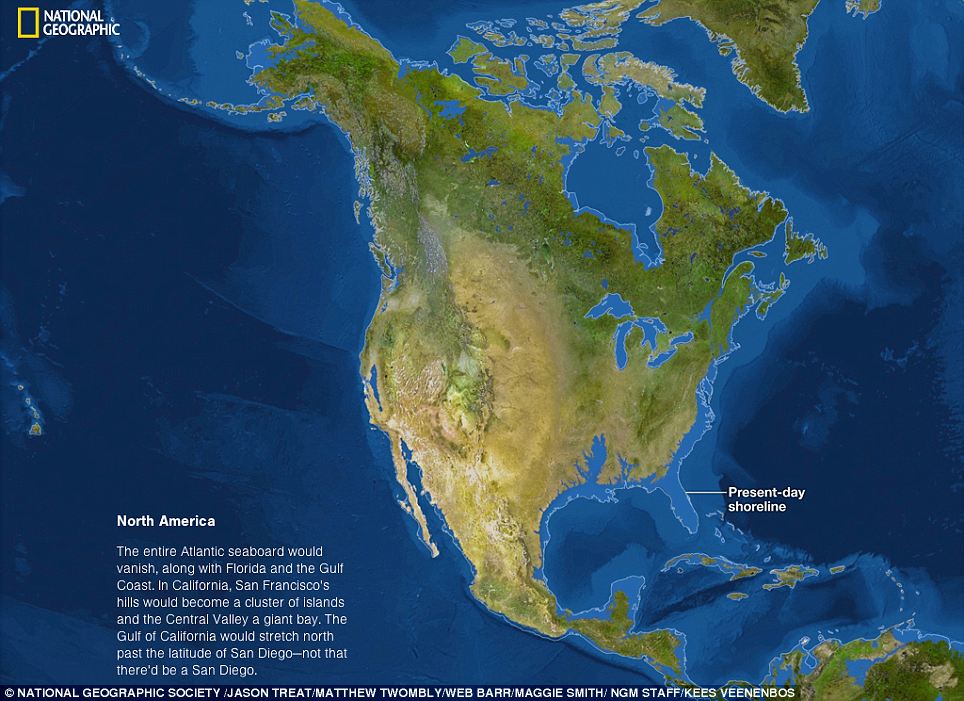
The last time the Earth was ice-free was 34 million years ago during the Eocene epoch. If this happened again, the entire Atlantic seaboard in the U.S would vanish, wiping out Florida and the Gulf Coast. While the hills in San Francisco would become islands and San Diego would be lost forever | Scientists believe it could take around 5,000 years for temperatures to rise significantly enough to melt all the ice on the planet, but claim the planet is already seeing the beginnings of this.
Over the past century, reports suggest the Earth's temperature has increased by around half a degree Celsius and, according to the U.S. Environmental Protection Agency (EPA), this has already caused sea levels to rise by around seven inches.
The largest concentrations of ice on Earth are found in Greenland and Antarctica but it is also found on exposed areas, on mountain tops and in other regions.
The East Antarctica ice sheet, for example, is so large it contains around 80 per cent of all the ice on the planet and its size has protected it previously during warmer periods in Earth’s history.
This includes during the Eocene epoch - a period of increased global temperatures that lasted from 56 to 34 million years ago.
During this period of time, little to no ice was present on Earth and there was little difference in temperature at the equator compared to the poles.
Warming oceans are already melting the floating ice sheet in west Antarctica and since 1992, National Geographic reports the sheet has lost around 65 million metric tonnes of ice each year.
The ice sheets in Greenland and west Antarctica shrank significantly during the epoch and if temperatures were to rise in a similar manner again, the ice sheets across the regions could disappear into the sea completely.
Read more: http://www.dailymail.co.uk/sciencetech/article-2488452/Map-reveals-devastation-worlds-ice-melted.html#ixzz3I6qUExHc
Scientists believe it could take around 5,000 years for temperatures to rise significantly enough to melt all the ice on the planet, but claim the planet is already seeing the beginnings of this.
Over the past century, reports suggest the Earth's temperature has increased by around half a degree Celsius and, according to the U.S. Environmental Protection Agency (EPA), this has already caused sea levels to rise by around seven inches.
The largest concentrations of ice on Earth are found in Greenland and Antarctica but it is also found on exposed areas, on mountain tops and in other regions.
The East Antarctica ice sheet, for example, is so large it contains around 80 per cent of all the ice on the planet and its size has protected it previously during warmer periods in Earth’s history.
This includes during the Eocene epoch - a period of increased global temperatures that lasted from 56 to 34 million years ago.
During this period of time, little to no ice was present on Earth and there was little difference in temperature at the equator compared to the poles.
Warming oceans are already melting the floating ice sheet in west Antarctica and since 1992, National Geographic reports the sheet has lost around 65 million metric tonnes of ice each year.
The ice sheets in Greenland and west Antarctica shrank significantly during the epoch and if temperatures were to rise in a similar manner again, the ice sheets across the regions could disappear into the sea completely. |